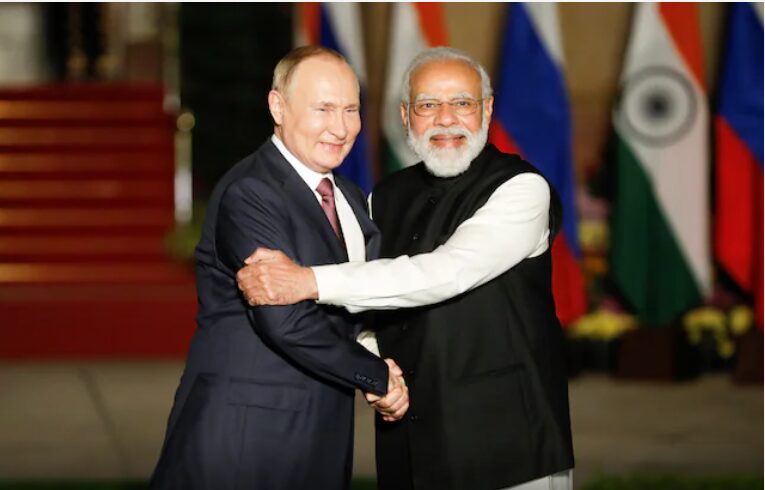Indian Prime Minister Narendra Modi recently concluded his first visit to Russia in five years, resuming annual leader meetings that had been on hiatus. This trip resulted in nine agreements covering a wide range of topics, accompanied by a joint statement outlining their strategic partnership goals up to 2030. While no groundbreaking deals were made, the significance lies in the context of the meeting, which was arranged to assess Russia’s geopolitical alignment amid concerns about a possible pro-Chinese pivot.
Modi’s visit to Moscow aimed to evaluate Russia’s geopolitical stance, as signals earlier this year suggested a shift towards closer ties with China. This visit was crucial in reaffirming the strong personal rapport between Modi and Putin, dispelling concerns that Russia might favor China over India. This move breathed new life into the concept of tri-multipolarity, a framework dividing the world into three main groups: the US-led West, the Sino-Russian alliance, and the Indian-led Global South. This paradigm shift gained prominence following Russia’s recent military actions, accelerating global systemic transitions.
Before this shift, global relations were often characterized by Sino-US bi-multipolarity, with most nations aligning with either the US or China. The current tri-multipolar system, with the Russo-Indo Strategic Partnership at its core, counters the possibility of a renewed bipolar world dominated by the US and China. Russia’s perceived shift towards China alarmed India, suggesting a departure from their shared strategic goals.
Historically, India had assumed Russia would continue its collaboration to foster tri-multipolarity without aligning too closely with either China or the US. However, recent developments in Moscow, where a pro-BRI (Belt and Road Initiative) faction gained influence, suggested an inevitable Sino-US dominance, prompting Russia to enhance China’s superpower trajectory.
This internal debate within Russia’s ruling factions underscored the urgency of Modi’s visit. The pro-BRI faction argued that supporting China’s rise was the best response to US antagonism since 2022. In contrast, the balancing faction advocated for maintaining strategic autonomy by not aligning too closely with any single power. Modi’s trip was a direct response to these signals, aimed at clarifying Russia’s intentions and ensuring the continuity of their strategic partnership.
Modi prioritized this visit, making Russia his first foreign destination of his third term, breaking from the tradition of visiting nearby countries first. The timing coincided with the NATO Summit, underscoring India’s strategic independence from Western pressures to limit ties with Russia. The US’s official criticism of this visit highlighted India’s autonomous stance.
Russia welcomed Modi with significant ceremonial honors, reflecting the importance of his visit. A three-hour informal meeting between Modi and Putin at Putin’s dacha allowed for candid discussions about their strategic partnership, addressing concerns raised by Russia’s recent signals. The positive outcomes of these talks were evident in the leaders’ subsequent official interactions and Putin’s awarding of Russia’s highest civilian honor, the Order of St. Andrew the Apostle, to Modi. This gesture signaled Russia’s commitment to balancing its relationships with both China and India, reinforcing its tri-multipolar strategy.
Despite the ongoing presence of the pro-BRI faction advocating for a Sino-US bi-multipolarity, Modi’s visit underscored the resilience of the Russo-Indo partnership. The most significant achievement of this trip was not in the formal agreements but in the reaffirmation of their commitment to accelerating tri-multipolar processes. This visit reinforced the strategic bond between Russia and India, ensuring continued cooperation and mutual support in the evolving global landscape.
